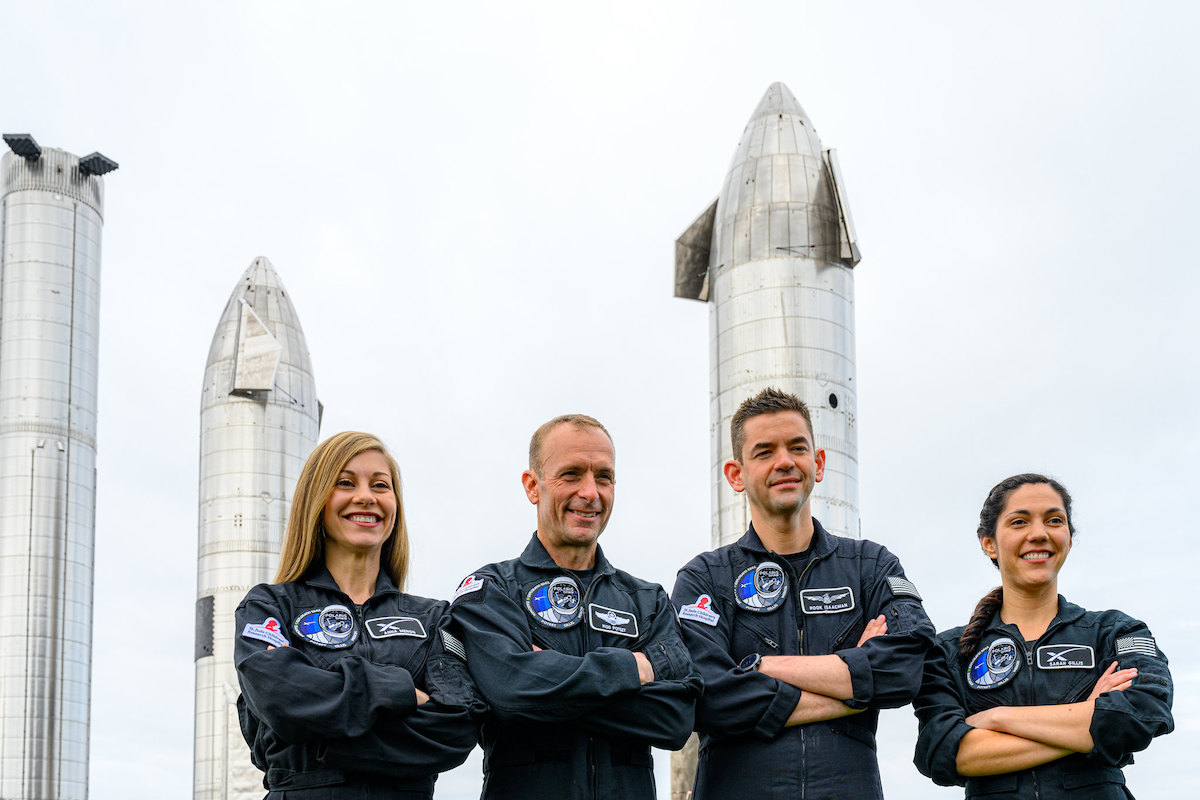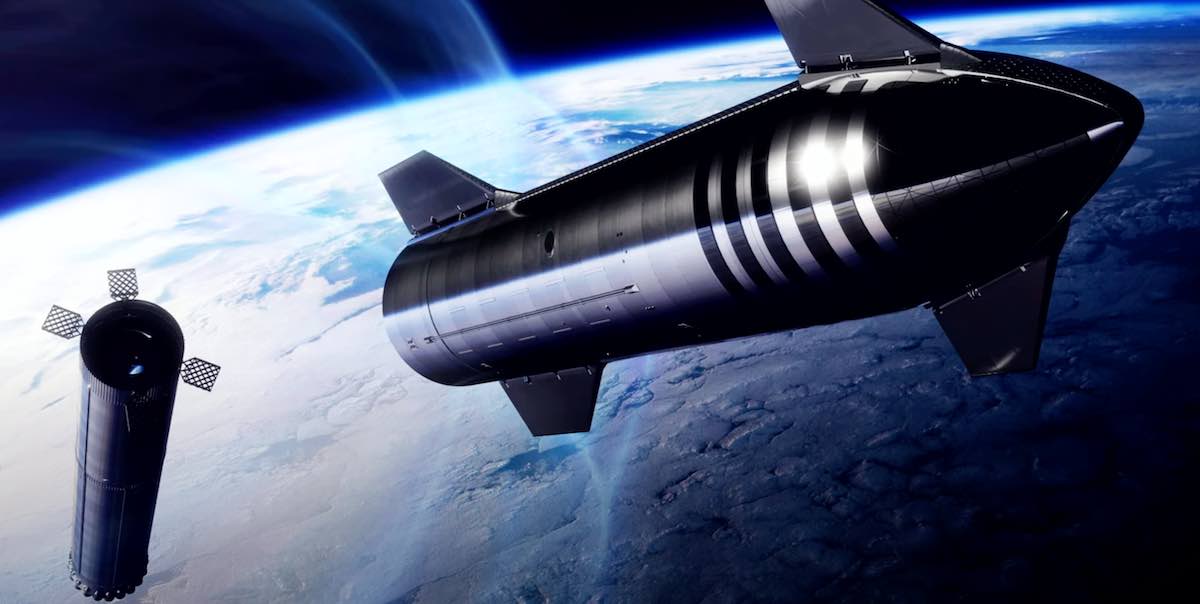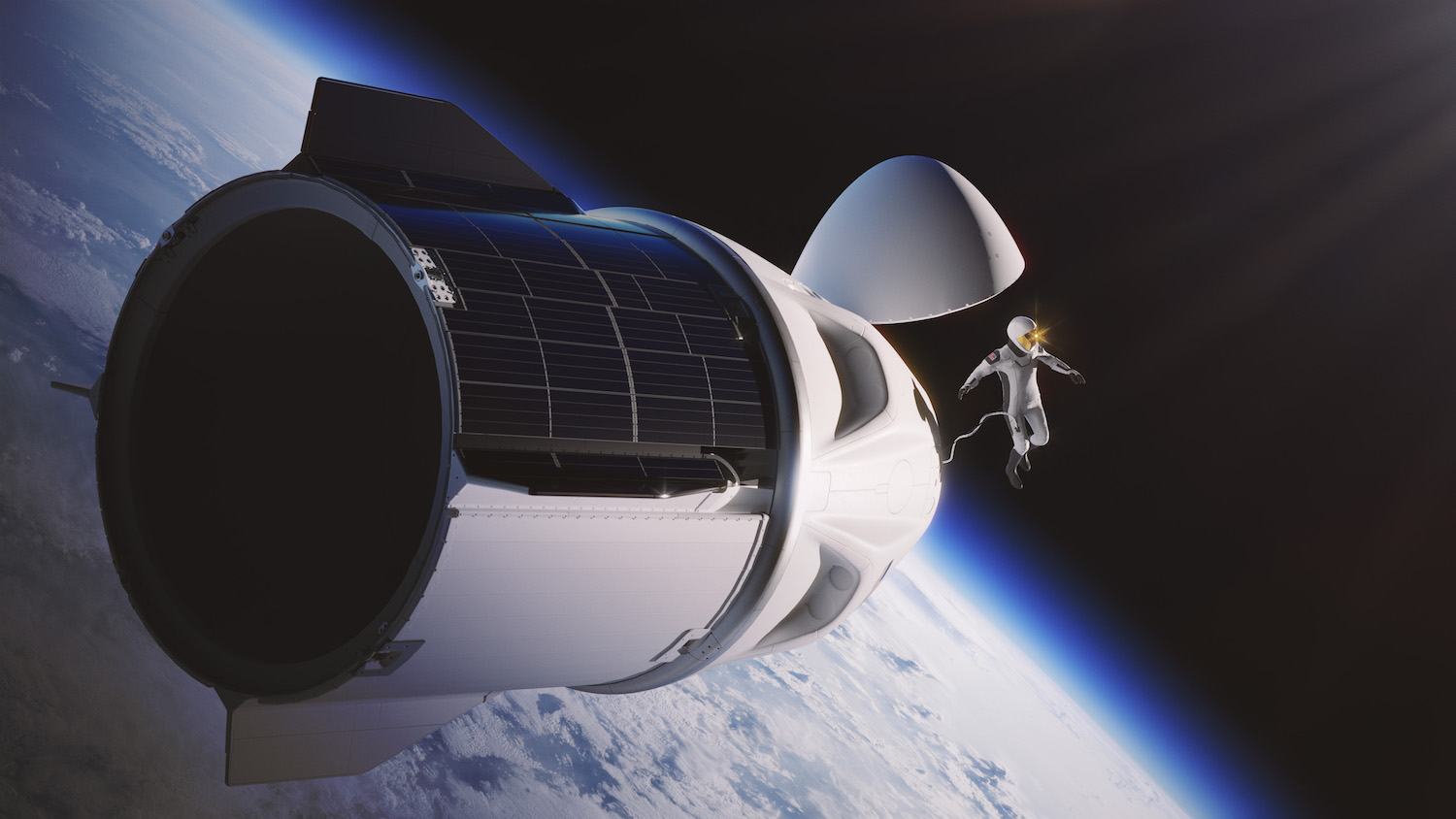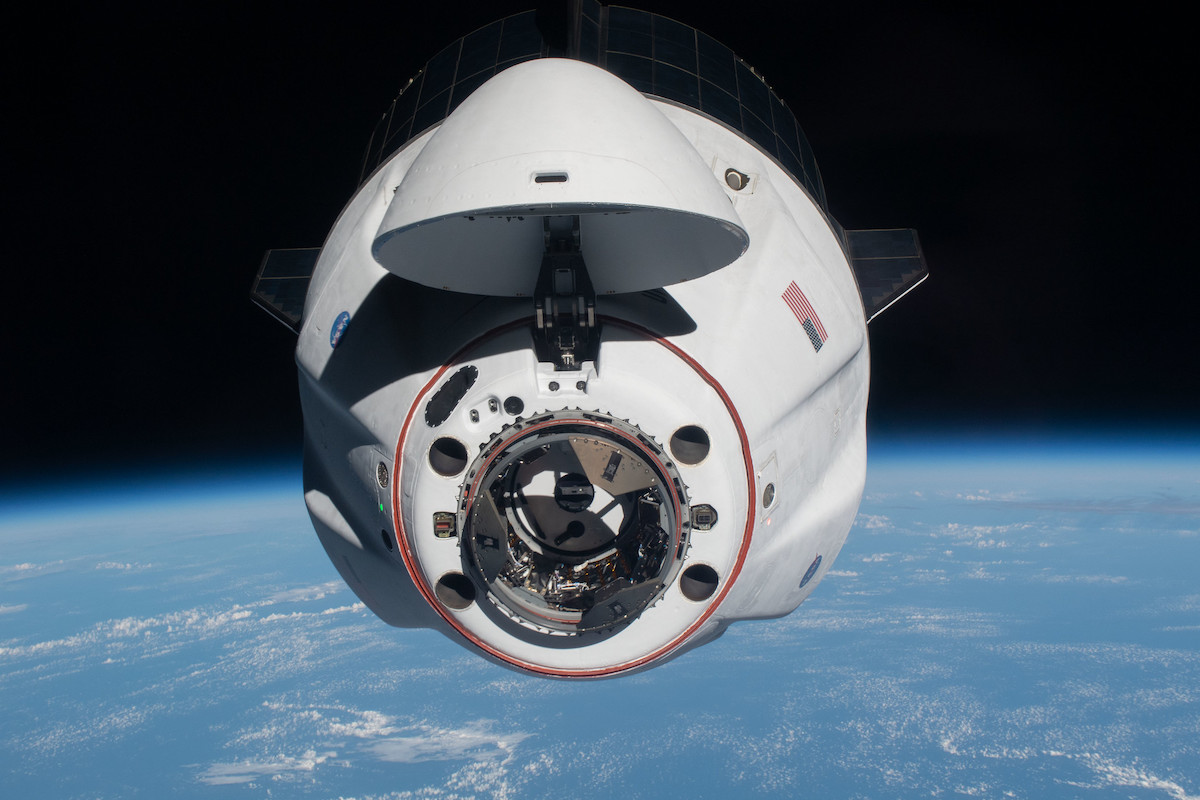
Jared Isaacman, the billionaire businessman who bankrolled the first human space mission with all private citizens last year, announced plans Monday for up to three more SpaceX flights, a privately-funded program that will include the first commercial spacewalk, and ultimately a ride on the giant Starship rocket ship.
The first of the missions is scheduled for launch in November or December of this year on a Falcon 9 rocket and Crew Dragon capsule. That flight, called Polaris Dawn, will attempt to reach the highest Earth orbit ever flown by humans, and the farthest anyone has traveled from Earth since the last Apollo moon mission in 1972.
“We’re going to go farther into space than humans have gone since we last walked on the moon,” Isaacman told NBC News, which unveiled the Polaris missions on the Today Show Monday morning.
Two more missions are part of the Polaris Program, one also using a Crew Dragon spacecraft and another set to be the first human flight on SpaceX’s next-generation Starship space vehicle.
The program is aimed at demonstrating new technologies and capabilities in deep space and further exploration of the moon, Mars, and beyond.
“The Polaris Program is an important step in advancing human space exploration while helping to solve problems through the use of innovative technology here on Earth,” Isaacman said in a press release. “On Polaris Dawn, we endeavor to achieve the highest Earth orbit ever flown in addition to conducting the world’s first commercial spacewalk and testing of Starlink laser-based communication.”
SpaceX is regularly launching satellites for its Starlink internet network to provide global broadband connectivity. It could also find future use for communications between spacecraft. SpaceX’s current generation of Starlink satellites feature laser inter-satellite links, allowing them to pass large volumes of data without going through antennas on the ground.

Isaacman said Polaris missions mission will not only support space research. The program will also support St. Jude Children’s Research Hospital, and help inspire children with cancer.
St. Jude’s was the beneficiary of $243 million in fundraising through Isaacman’s Inspiration4 mission last September, when he and three civilian crewmates spent three days in Earth orbit on a Crew Dragon spacecraft. That mission, which also launched on a Falcon 9 rocket, was the first purely commercial human spaceflight to orbit Earth without the involvement of a government agency.
Like Inspiration 4, the Polaris Dawn mission will launch from pad 39A at NASA’s Kennedy Space Center in Florida. The crew, commanded by Isaacman, will spend up to five days in orbit, flying through portions of the Van Allen radiation belts.
Joining Isaacman on the Polaris Dawn mission will be Scott “Kidd” Poteet, a veteran fighter pilot and retired lieutenant colonel in the U.S. Air Force who also served as mission director for Inspiration4. Two SpaceX employees, Sarah Gillis and Anna Menon, will also fly to orbit on Polaris Dawn.
Gillis oversee’s SpaceX’s astronaut training program, and Menon is a veteran mission director and crew communicator in SpaceX’s mission control center. Menon’s husband, Anil, was selected by NASA as an astronaut candidate in December.
Isaacman, 39, founded Shift4 Payments, an online payment application, and has a net worth of $1.7 billion, according to Forbes.
Isaacman and Polaris Program officials did not say exactly how high the Polaris Dawn mission will fly, but the program’s website said the mission “will take advantage of Falcon 9 and Dragon’s maximum performance.”

NASA’s Gemini 11 mission from 1966 holds the altitude record for an astronaut flight in Earth orbit. Gemini 11, crewed by commander Pete Conrad and pilot Dick Gordon, reached an altitude of 853 miles (1,372 kilometers), according to NASA.
Polaris Dawn will try to fly higher.
Two of the crew members plan to head outside the Crew Dragon spacecraft for a spacewalk. They will be suited up in a SpaceX-designed pressure suit, an upgraded unit based on SpaceX’s existing spacesuit used by astronauts riding inside the spacecraft.
The Crew Dragon spacecraft doesn’t have an airlock, so the spacewalk will require the entire capsule be depressurized in space. The crew members will float out of the hatch and remain tethered to the spaceship at an altitude of approximately 300 miles, or 500 kilometers, according to the Polaris Program’s website.
The mission will gather data on space radiation’s effects on human health, contribute to research on decompression sickness, and gather data on the effects of spaceflight on the human eye, a heath risk on long-duration spaceflights.
SpaceX and the Polaris team are collaborating with several research institutions on the science experiments, including the Translational Research Institute for Space Health, BioServe Space Technologies at the University of Colorado Boulder, Space Technologies Lab at Embry Riddle Aeronautical University, Weill Cornell Medicine, the Johns Hopkins University Applied Physics Laboratory, the Pacific Northwest National Laboratory, and the U.S. Air Force Academy.
Details of the second and third Polaris missions were not released Monday, other than plans that the third flight would be the first crewed mission aboard SpaceX’s Starship. The second mission “will continue to expand the boundaries of future human spaceflight missions, in-space communications, and scientific research,” officials said on the Polaris Program website.

Isaacman didn’t discuss how much he is paying for the Polaris missions in the Today Show interview. He is believed to have paid somewhere less than $200 million for the four-seat Inspiration4 mission.
SpaceX’s next-generation Starship rocket, taller and more powerful than any rocket ever built, is being developed for future expeditions to Mars.
The Crew Dragon, Isaacman’s ride for the first two Polaris, was designed under contract to NASA to ferry crews of four to and from the International Space Station, requiring the capsule to re-enter the atmosphere at a velocity of around 17,000 mph. The Dragon will return at higher speeds from the Polaris Dawn mission, which will exceed the 250-mile-high altitude of the space station.
Yusaku Maezawa, a Japanese fashion entrepreneur, has already reserved a flight on the Starship around the moon. He is planning to take a crew of artists and other private citizens on the journey, a mission called dearMoon. Isaacman’s Starship mission will come first.
The privately-funded Polaris missions will take off as NASA plans to send astronauts back to the moon with the Space Launch System and Orion spacecraft, developed and owned by the U.S. government. NASA’s Artemis moon program is geared toward landing astronauts on the moon’s south pole later this decade.
The first SLS test launch its scheduled to send an Orion crew capsule around the moon on an unpiloted test flight as soon as this spring. The first crewed SLS and Orion flight, known as Artemis 2, is not scheduled to launch until 2024, when it will carry a team of four astronauts around the moon and back to Earth.
Future Artemis missions will land astronauts on the lunar surface. The first NASA astronaut landing on the moon is planned to use a variant of the Starship after the agency selected SpaceX for a $2.9 billion lunar lander contract last year.
from Spaceflight Now https://ift.tt/Wpgha9z
via World Space Info







0 comments:
Post a Comment